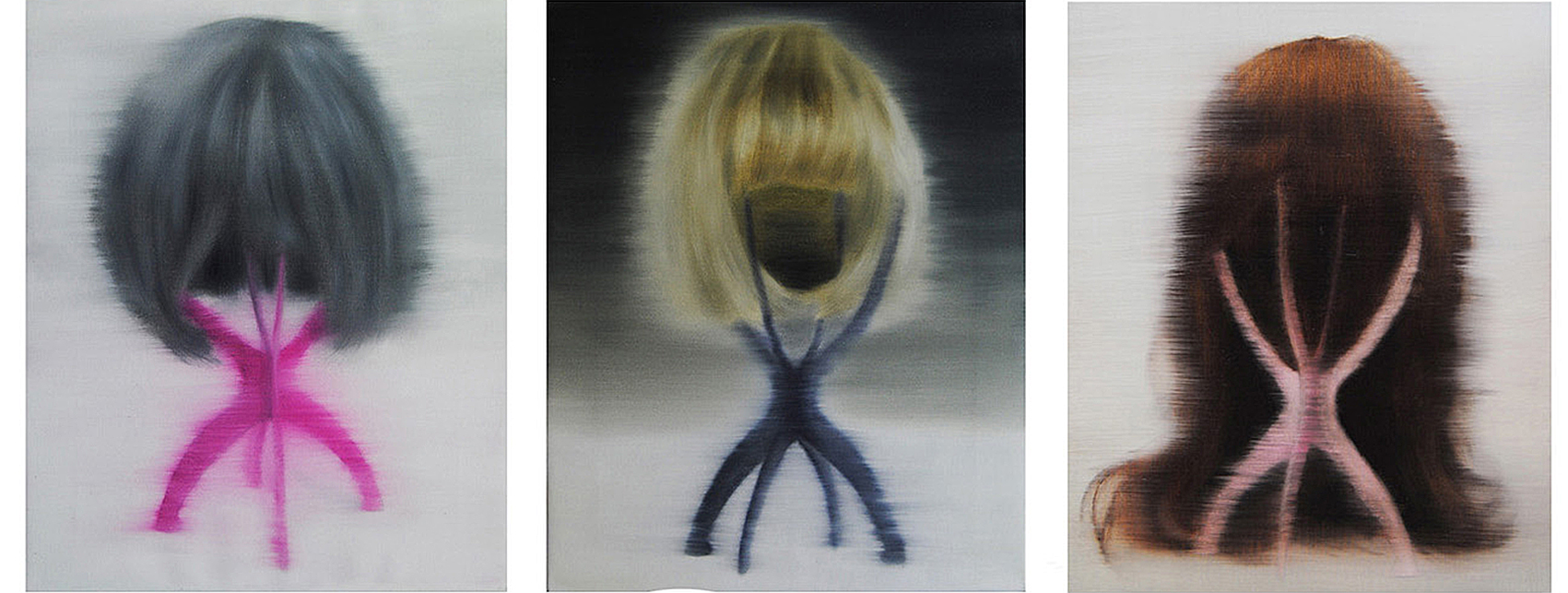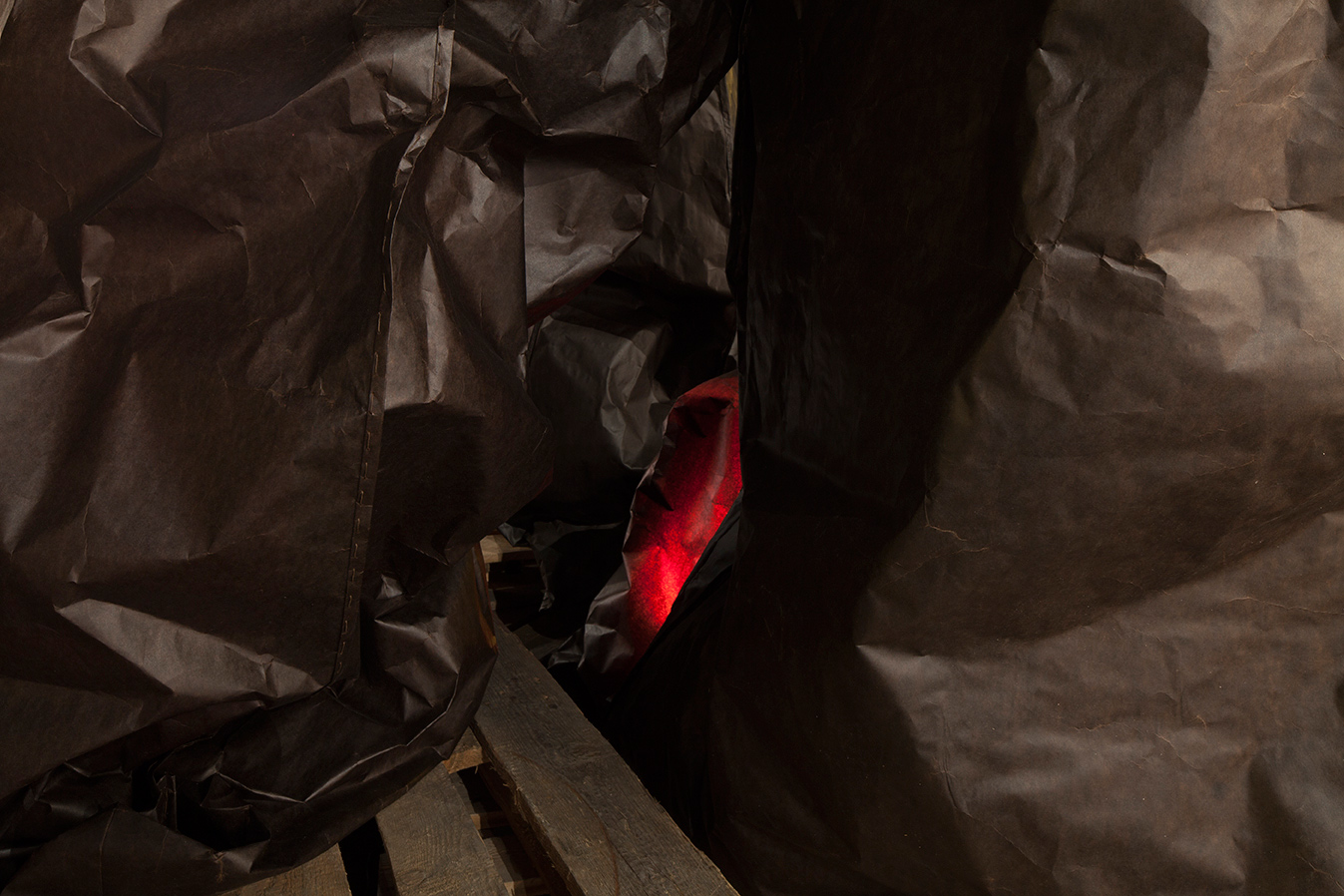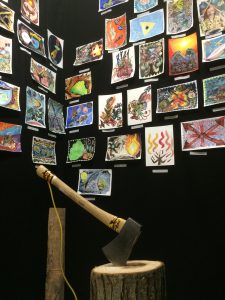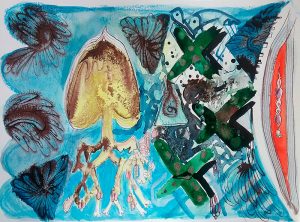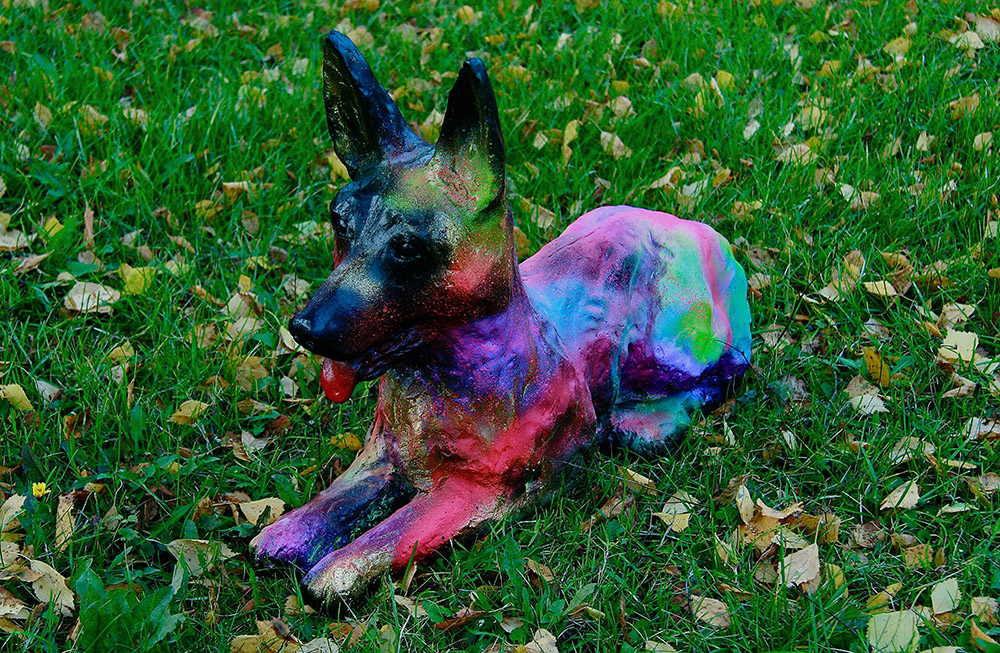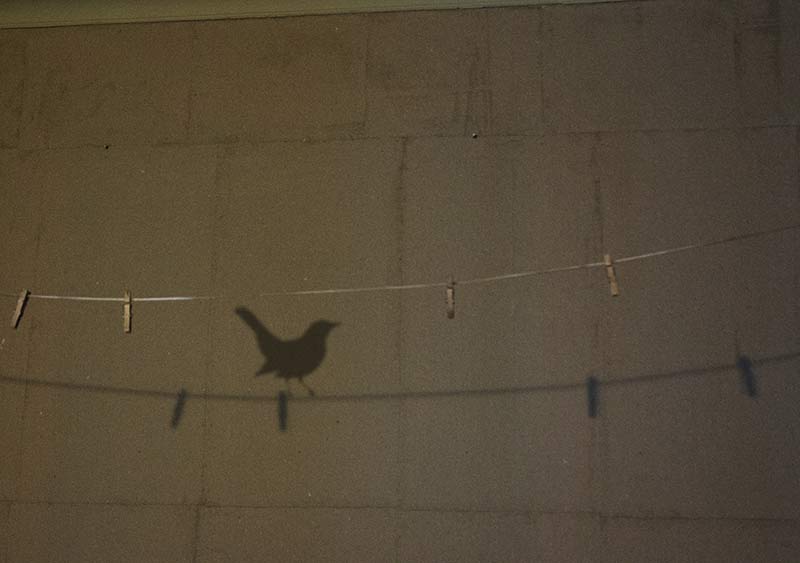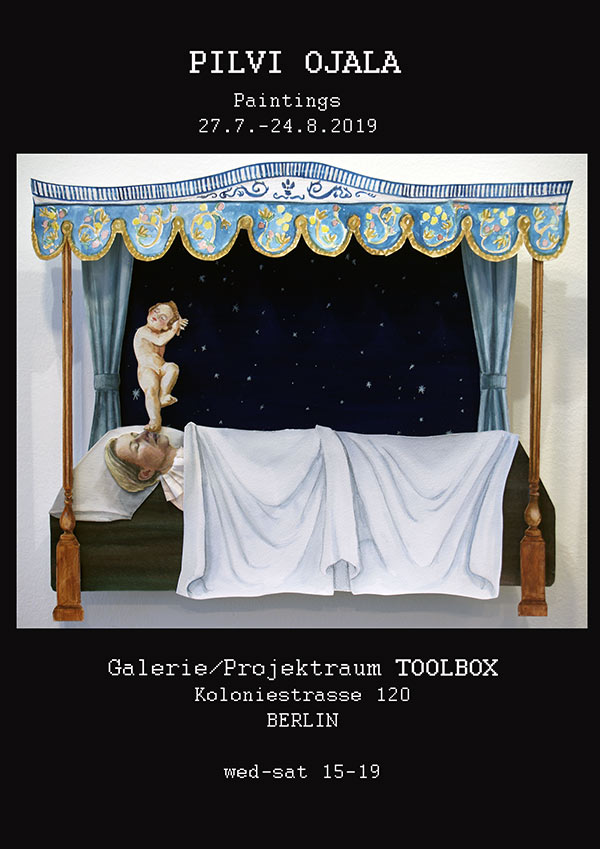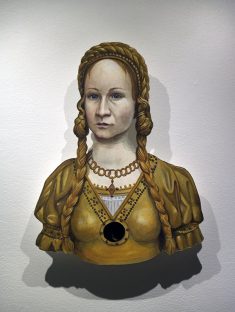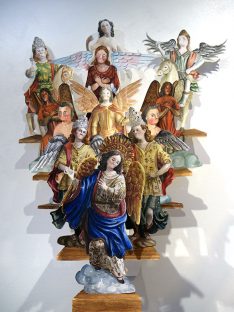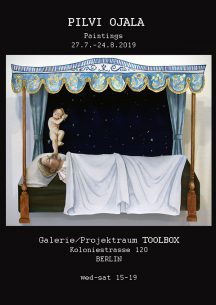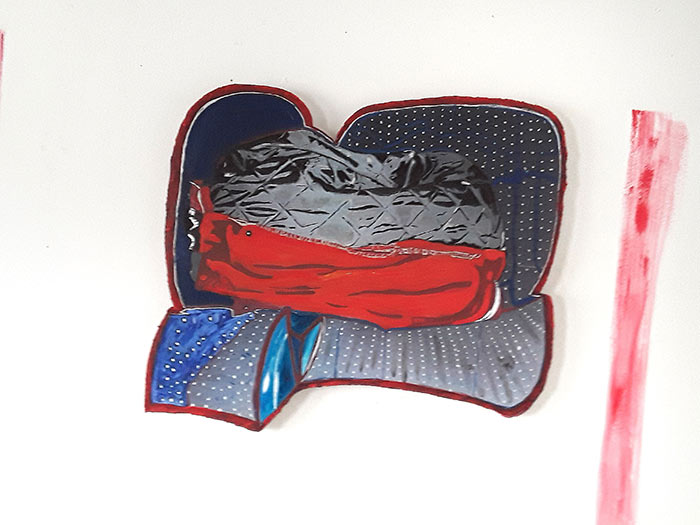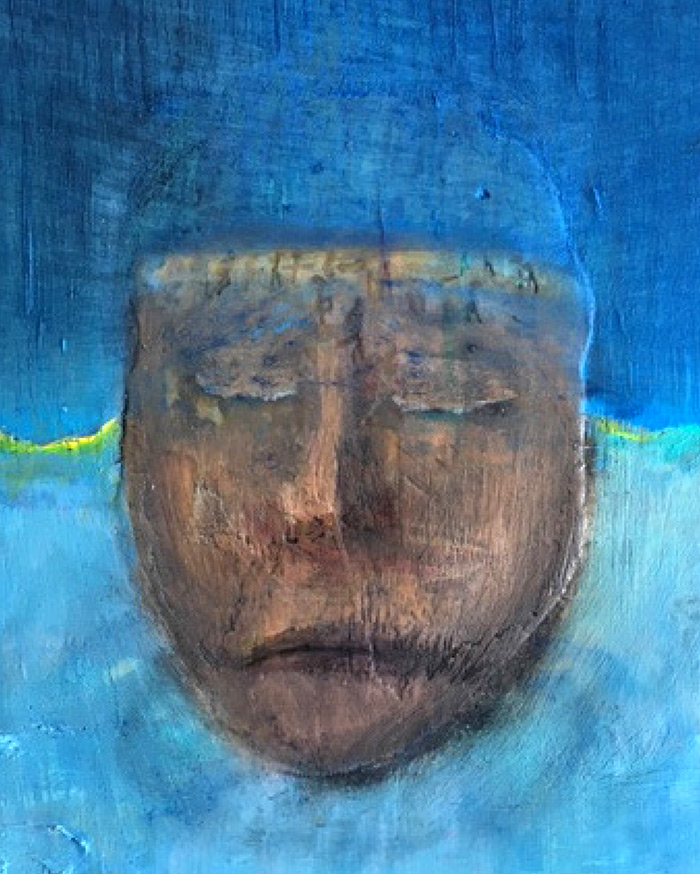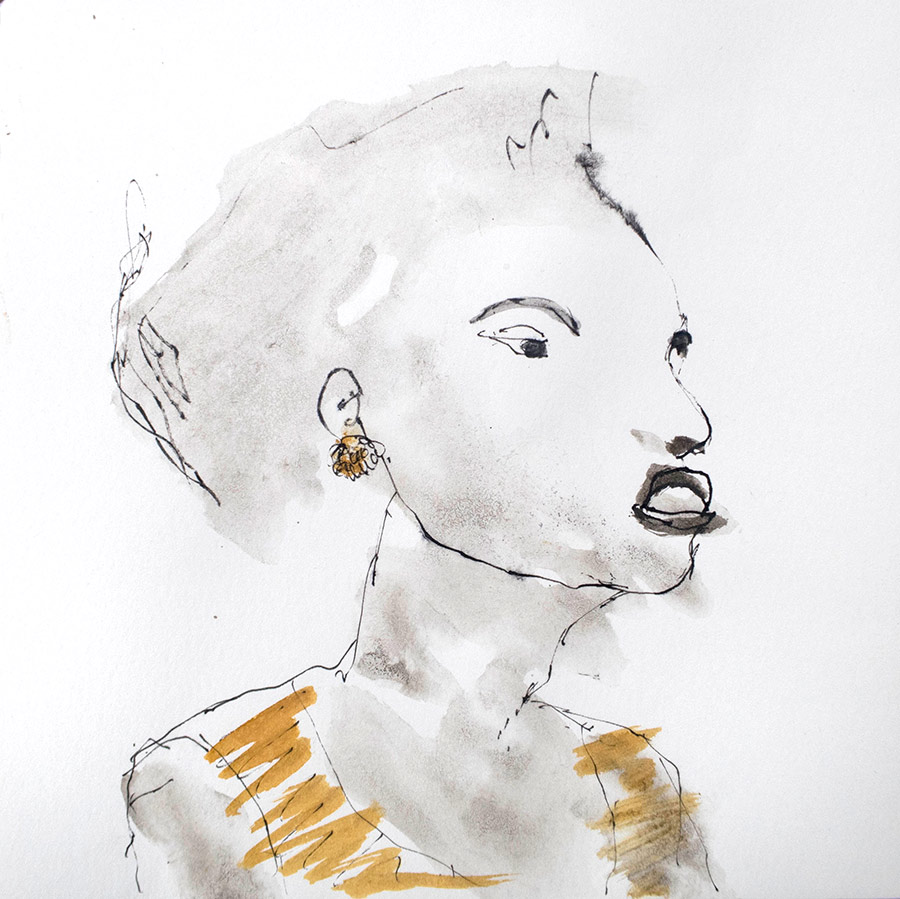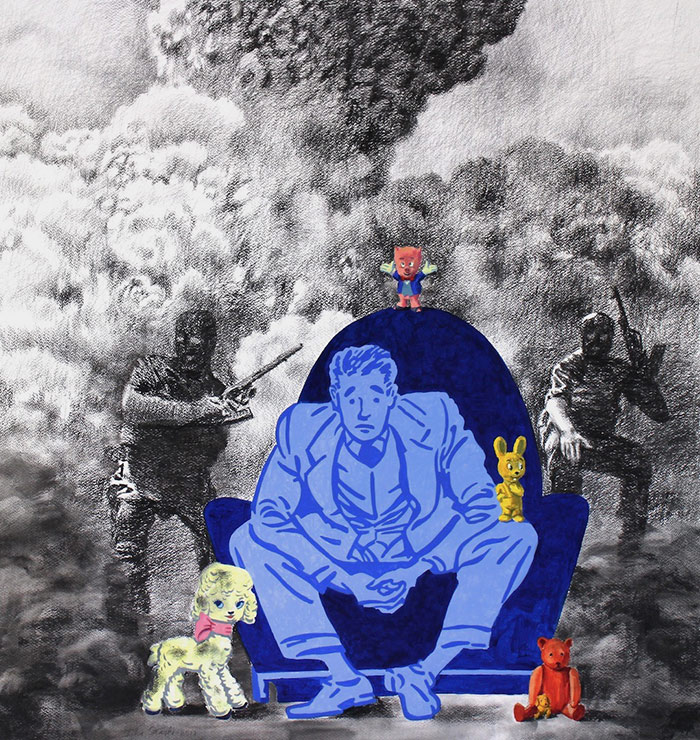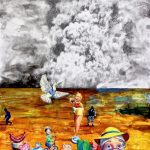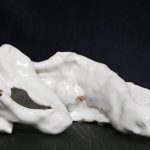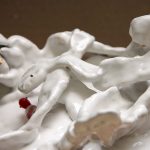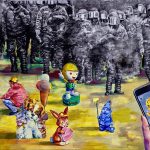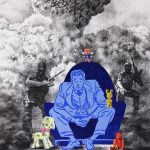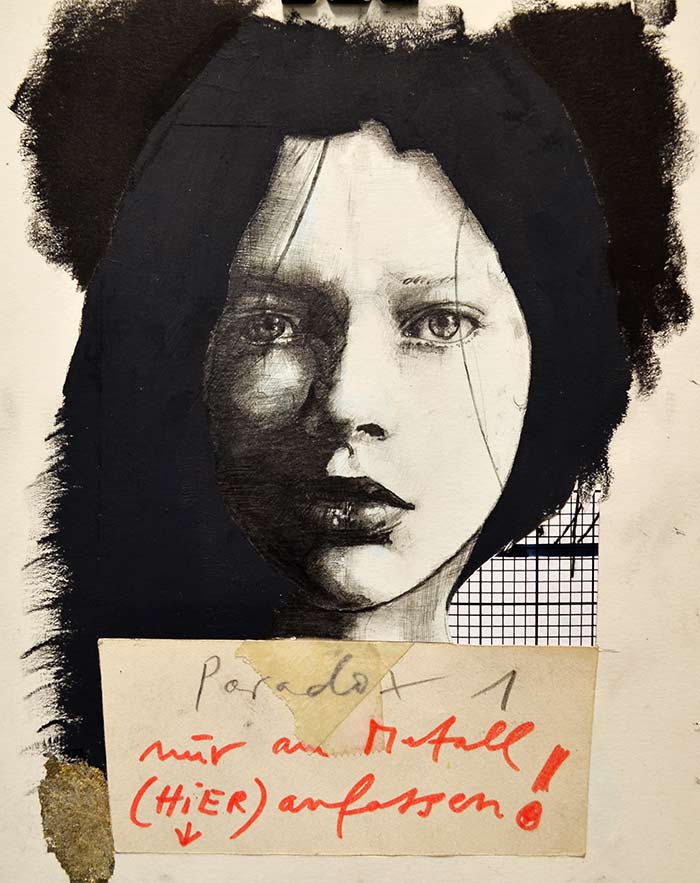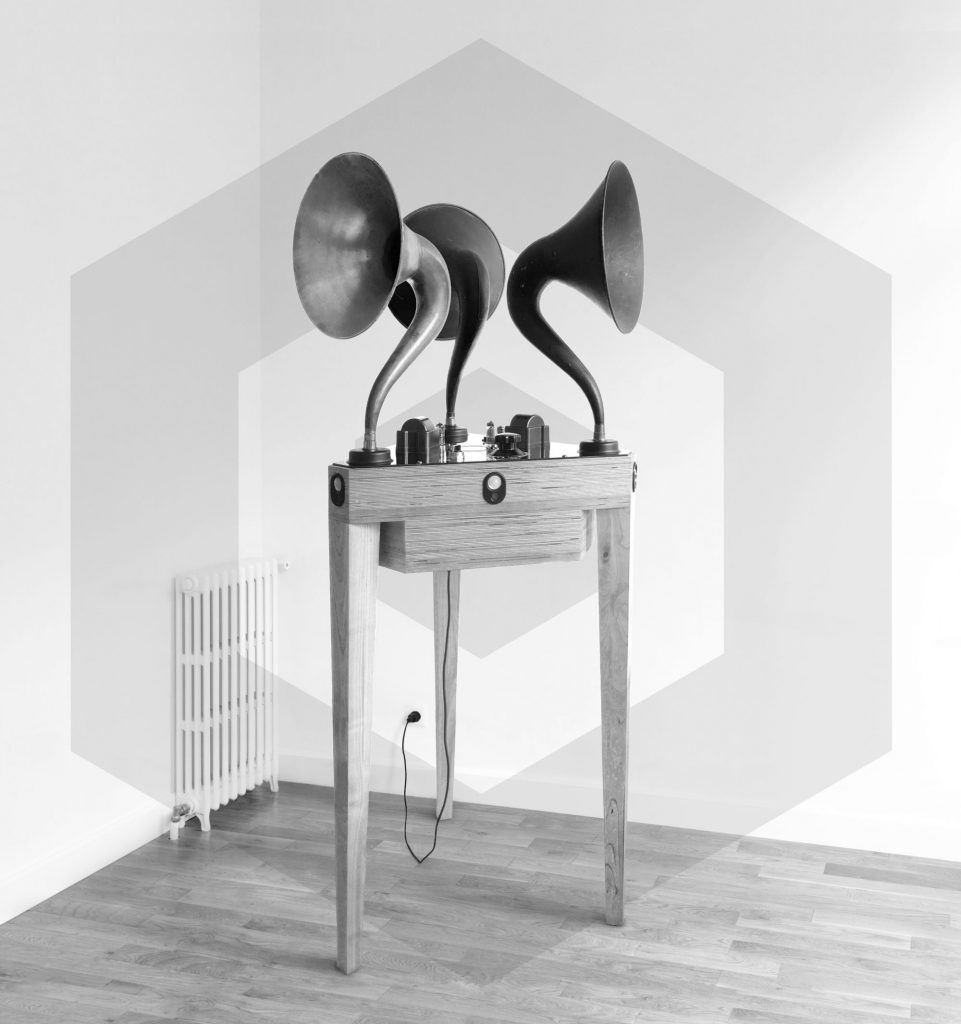Paavo Paunu, Finnland
paintings
Toolbox Kabinett: Karen Koltermann, Berlin
Welcome: Vernissage / Opening: Friday / Freitag 28.06.2019, 7pm |
Open on Sunday 30 June, 2019, 2–6pm |
Ausstellungsdauer / Exhibition open: 29 June – 20 July 2019 |
Öffnungszeiten / Opening hours: Wed–Sa 3–7pm |
An Feiertagen ist die Toolbox geschlossen
On Bank holidays Toolbox is closed
Artwork: Paavo paunu
GESUNDHEIT – TERVEYDEKSI
Paavo Paunun (s. 1965) maalaukset välittävät tarinaa ihmisestä ja
ihmisenä olemisesta. Olennaista on rajojen tunnistaminen ja
yhteyden hakeminen. Se on tila, jolla ei ole selkeää muotoa. Se on
tunteiden, toiveiden ja uskomuksien kohtaamispaikka.
BLESS YOU
In his paintings Paavo Paunu (b. 1965) mediates the story of being human. It is essential to identify the limits and create platforms for confronting. There is space without clear form, based on emotions, hopes, beliefs and truth.
Paavo Paunu (b. 1965) graduated from The Painting Department at the Finnish Academy of Fine Arts in 1990. He is working in the fields of painting, sculpture and installations . He has appointed several exhibitions abroad and in Finland.
How can we give form to the formless: to mental impressions, to fleeting thoughts, to riddles that have no answer? Paavo Paunu’s production induces a sense of the entire inexplicability of reality. It raises questions about who I am, what I experience, and what is important in life.
Paunu is a painter of space: he situates his paintings in exhibition spaces, the result being integrated wholes that resemble installations. He is also known for his sculptural paintings and painted sculptures. Right from the start of his artistic career, he made large-scale works, which soon began to acquire greater depth. Stages thus begin to emerge out of the paintings, extending in front of and behind the ground canvas.
Paunu’s production is not limited by the conventional tools of sculpture or painting, nor by any obvious role models, genres or references to theoretical sources. The sound of his works resonates from further away, from out of his own world, which is, nevertheless, human reality. His art is marked by psychological surrealism and expressive symbolism. The aim is to seek out the timeless core stratum of human beings, what motivates their actions, their feelings; ranging from goodness, trust and triumph to shame and unbelief. Paunu’s pictures reflect the uniqueness of experiences and the relationship of the finite human being with the unknown: with nature, with the depths of the mind, and fantasies.
Martta Heikkilä
Karen Koltermann
The Shelter
In September 2018 Karen Koltermann had the opportunity to take part in a guided tour to the Gorham Cave Complex while she was an artist in residence in Gibraltar.
In a long gone time, which we call the Middle Palaeolithic, the Gorham Cave was inhabited by Neanderthals who, as has come to light in 2014, also made art. One 39,000 years old cross hatching is still visible and is deemed evidence of the inhabitants’ faculties of abstract thinking and their impressive ability to express themselves.
In the current exhibition in Toolbox, Koltermann shows new pictures on caves and crepuscular caves that are used as shelters. The works are based on the photos that Koltermann took while she visited the caves.
Between the walls of these habitations made by nature, time seems to stand still, when you consider for a moment the many fateful, beautiful, horrible, sad or just funny things the inhabitants may have experienced in the course of millenia – and which stories the already discovered and the yet to be discovered art works can tell us.
We should hope for another at least 39,000 years for this right to spontaneous artistic expression.
Hans Kantereit, 12 June, 2019
Karen Koltermann
Der Unterschlupf
Im September 2018 hat Karen Koltermann im Rahmen eines Artist-in-Residence-Programms in Gibraltar an einer Führung zur Gorham-Höhle teilgenommen.
Die Höhle wurde in einer längst vergangenen Zeit namens Mittelpaläolithikum von Neandertalern bewohnt, die sich dort, wie seit 2014 bekannt ist, auch künstlerisch betätigten.
Eine 39 000 Jahre alte Kreuzschraffur ist erhalten und gilt als Beleg für abstraktes Denken und ein beeindruckendes Ausdrucksvermögen.
Im Toolbox-Studio zeigt Koltermann nun neue Bilder, die sich mit Höhlen und Halbhöhlen als Schutzraum auseinandersetzen. Grundlage dieser Arbeiten sind Fotos, die sie während ihres Aufenthaltes von den Höhlen gemacht hat.
Zwischen den Wänden dieser von der Natur geschaffenen Behausungen scheint der Zeitenlauf still zu stehen, wenn man überlegt, wie viel Schicksalhaftes, Schönes, Grausiges, Trauriges oder einfach Komisches ihren Bewohnerinnen und Bewohnern im Laufe der Jahrtausende widerfahren sein mag – und welche der bisher erkannten und noch zu entdeckenden Kunstwerke uns welche Geschichten erzählen werden.
Wir sollten uns jedenfalls wünschen, dass dieses Recht auf freie und spontane künstlerische Äußerung mindestens weitere 39 000 Jahre gegeben sein wird.
Wobei wir natürlich nicht wissen, ob die Kollegin damals nach Fertigstellung ihres Werkes nicht vom Hausmeister hinter der Höhle zusammengeschrien und nach allen Regeln der Kunst verprügelt wurde …
Hans Kantereit, 12.06.2019
